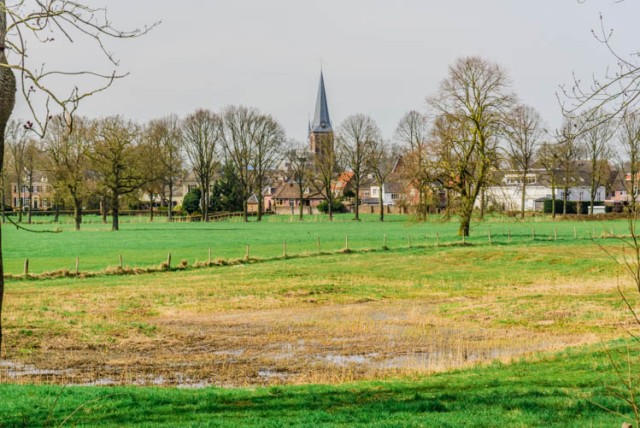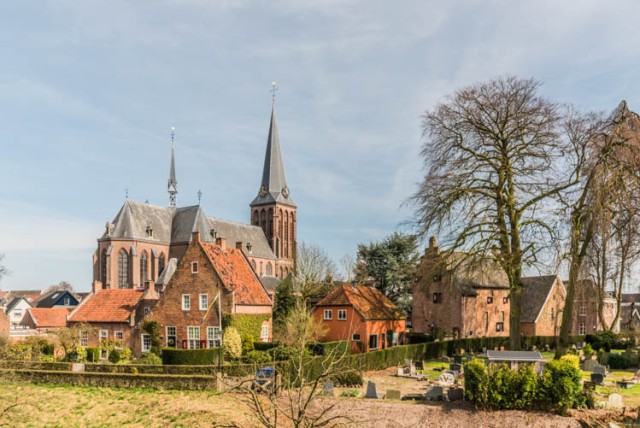
St Pancratius (de Pancratiuskerk) in the little Dutch market town of ‘s-Heerenberg (population 8,000) and literally a ten minute stroll from the German border.
At first blush – another pretty, ornate, but unexceptional post-Vatican I church in the south eastern Netherlands, a sign of a long suppressed community bursting into both prosperity and political power. Inevitably designed by the Albert Tepe, a prolific architect of Dutch neogothic… and then…
In the north aisle a unusual piece of stained glass catches the eye – is that a Gestapo man in stained glass?
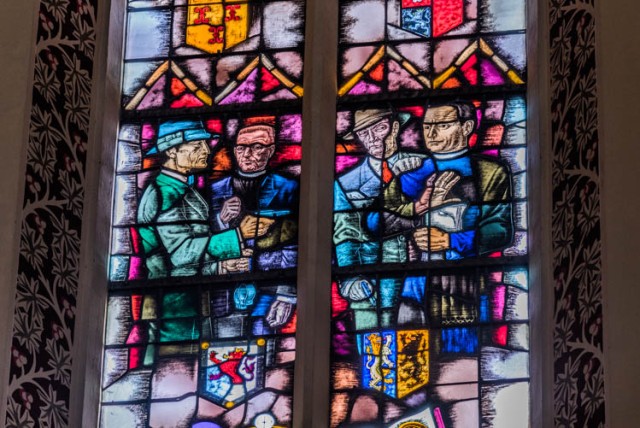
Yes, it is. And so one learns of the story of Frs. Galama and van Rooijen, parish priest and curate respectively, arrested in 1941 after preaching against the Dutch Nazi Party, the NSB, who were deported to Dachau where both died in 1942. The scene of the Judas kiss immediately above makes clear the bitter but rarely mentioned memories of collaboration and betrayal that must have haunted communities like this for decades after the war.
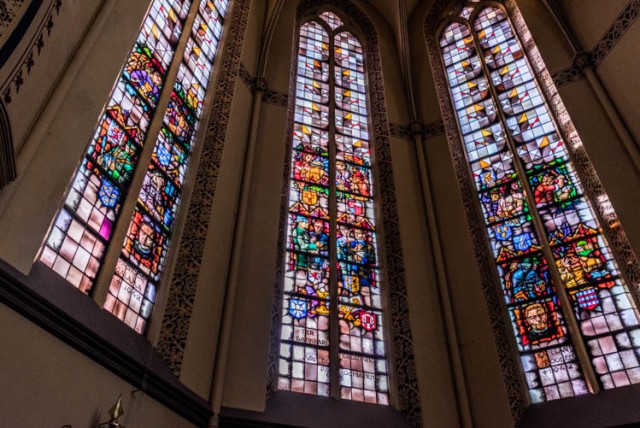
Central window: pastor and chaplain are arrested by two armed Gestapo men
men. In the foreground there is a book with crossed keys, a chalice with host and the text: “In thankful memory of the parish clergy”. Above: Judas betrays Jesus with a kiss surrounded by soldiers.
Left window: Galama, seated in a cell guarded by a soldier; above: Jesus in the Garden of
Olives is strengthened by an angel with a chalice.
Right window: van Rooyen. is being beaten up by a soldier; above: Jesus is flogged.
Unfortunately I cannot find information on the artist or date for this or the other, evidently older, glass in the church.
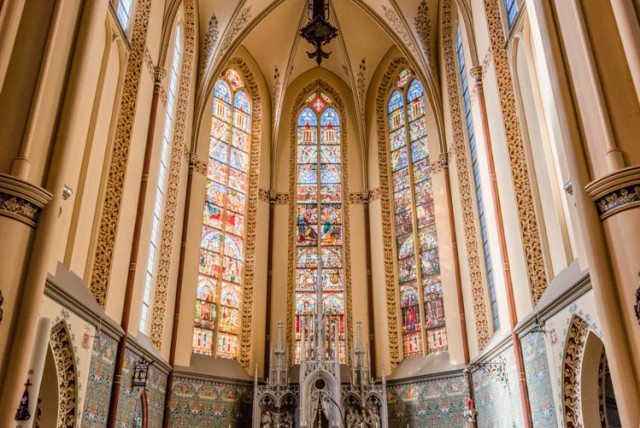
A few other interesting finds here as well.

The triumphal cross, dating to 1927, is popularly called the botterkruus. (butter cross in local dialect) as it was donated by a resident of the town, who had become rich in butter smuggling across the nearby German border.
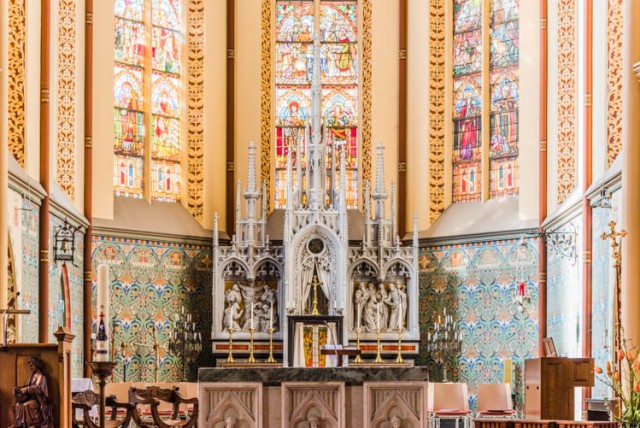
The altar is from the workshop of Willem Mengelberg, and was donated by Antonetta van Hohenzollern, daughter of King Ferdinand II of Portugal, who was married into the local van den Berg landed gentry family. To get her name and that of her husband, Prince Leopold of Hohenzollern, two images on the antependium under the altar are St Leopold (left) and Blessed Antonia (right) – just visible, didn’t photograph this bit well as didn’t realise its interest.
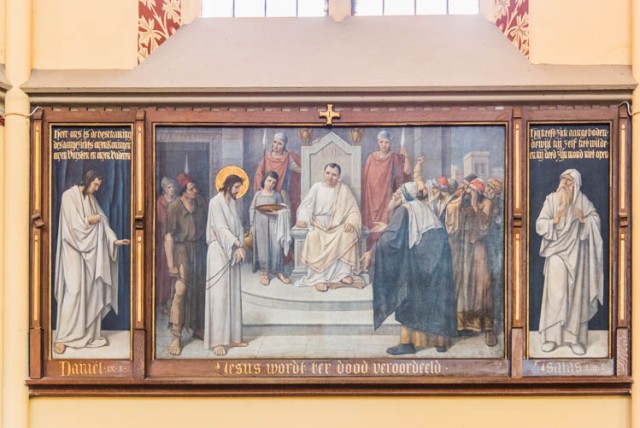
The first of a full set of stations of the cross painted in 1919; unfortunately I can find no further information, although this tableau obviously has a particular power given the subsequent history of the church.
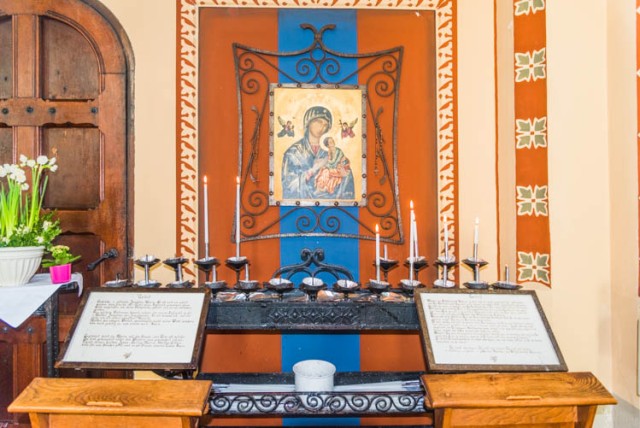
Pricket stand and icon of Our Lady of Perpetual Help; what caught my eye is, to the right, the prayer to the Mother of Perpetual Help in Dutch, while on the left the Memorare and Ave Maria are in German.
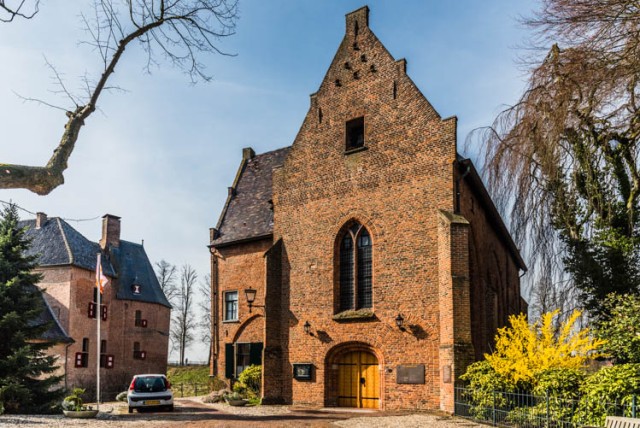
In terms of background – the original church for ‘s-Heerenberg was the C13 foundation that is now the Protestant Church a few hundred yards down the street.
A little chapel was founded here in 1259 by Lord Van den Bergh of the castle next door (as one does). It was expanded considerably in stages, especially in the C15, before falling into serious disrepair in the Dutch-Spanish War and, when the dust of this and the Reformation settled, the current form of the church was complete in 1612; only the transept remained to be used by the now established Dutch Reformed Church.
Excavations took place in 1943, during which the foundations of the choir and tower were uncovered in the cemetery.
There was extensive restoration work on the Protestant Church in both the early and late C20. Along with the majority of Reformed and Lutheran congregations in the Netherlands, it took part in the ‘fusion’ into the Protestant Church in the Netherlands in 2004.
Roman Catholicism was suppressed in the post-Reformation Netherlands, but this is a predominantly Catholic area where even the gentry refused to conform, so Catholics met in a ‘shed church’ from the late 17th Century until the Napoleonic régime relaxed anti-Catholic laws (ironically given what was happening a few hundred miles to the South).
With the 19th Century population boom, the town outgrew the Catholic church of the Napoleonic period, and the current 1895-7 building reflects the century of Rijke Roomse Leven (Rich Roman Life) between 1850s legal equality and post-1960s secularisation which saw the south eastern Netherlands a little heralded powerhouse of global Catholicism, in terms of learning, wealth, and political power.
A penultimate shot – St Pancratius in context:
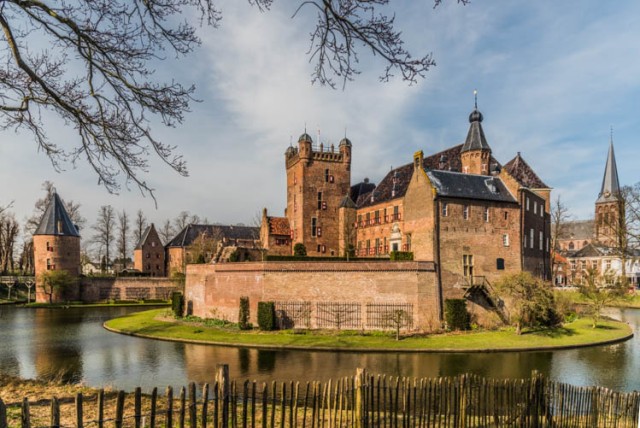
The castle was originally built in C13 by the Counts van den Bergh, but most of the castle dates from C14-15 and C17. It has burned down twice, in 1735 and 1939.
